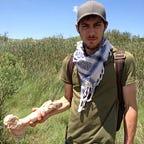Uses of Photogrammetry and 3D Laser Scanning
When three dimensional imaging is used for the digitization and recording of archaeological sites or objects there are currently two leading technologies used for the capture and recording of 3D digital files. Both photogrammetry and laser scanning can be used to create digital 3D models of places and objects for viewing and analysis.
The uses for both of these technologies may differ slightly but the basic use of them is more or less the same. Both technologies take a three dimensional object in the real world and by way of recording the physical and visual information from the object then using software to reconstruct a digital three dimensional representation of the object on a computer. The practical application of each method mostly depends on what you are looking to do with the end product. As times go on these technologies get better and better meaning that over time the results will be more accurate and thus the practical application of each of these technologies will continue to grow.
Where photogrammetry may be a completely viable in certain situations for example when the lighting conditions and camera are favorable (in photo lab style scenarios) the results of a model made with photogrammetry will be as precise as almost any other three dimensional modeling process currently available, however in situations where an individual is trying to model a large object such as a building outside or in an area with poor lighting it may be next to impossible to create an accurate if even complete model of the real world object or structure in question. In this case a 3D laser scanner may be a better option. The use of 3D laser scans to record the Arabic Fortress of Al Zubarah (Kersten, 2015) was completed with both 3D laser scanning and photogrammetry, the accuracy of the scans were primarily dependent on the size and the given lighting and ability to get the different camera angle necessary for the overlapping images necessary for a complete 3D rendering.
In some cases the combination of both technologies can be used to help to create immensely more accurate results for the creation of 3D models. In cases such as the recording of the Peruvian site of Pinchango Alto both technologies were used and the results of the digitization were both fast and incredibly accurate. (Lambers, 2007)
The best argument that can be made for which technology is better for any given situation depends primarily on the use and the resources available to the individual needing to create the 3D scans. A 3D laser scanner is a very specialized piece of technology that produces very accurate results but it is not available to everyone. Photogrammetry is a fairly accurate and widely available, any modern digital camera can take the photos necessary for a full 3D model of an object and with some open source software available the images can easily be processed into a 3D model.
In the future as these two technologies continue to advance and become better and more accurate Future use of 3D models will prove to be a much more accurate analysis tool and will continue to become more widely used and accepted as the best practices of the Archaeological field the use of 3D models will prove to be a more accurate analysis tool and will become more widely used and accepted as the best practices of the Archaeological field. Where these two technologies produce a similar product, they will continue to evolve and their full potential has most likely not yet been realized.
References
